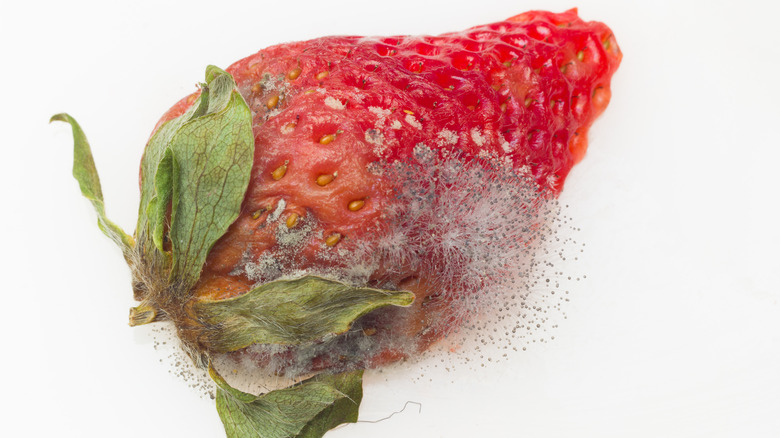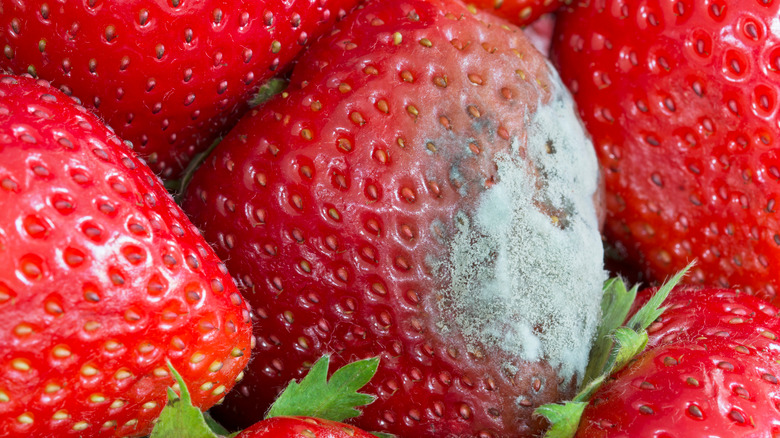Is It Safe To Eat Moldy Strawberries?
Strawberries are one of the most popular fruits. In fact, they are grown in every state in the U.S. and 94% of households in the country are nibbling away at these red beauties to the tune of 8 pounds a year, according to Colorado State University's Food Source Information. We love strawberries. We love them in pies and jams, in salads and our overnight oats, and all by their lonesome selves. Strawberries are sweet and delicious and chock-full of vitamin C, fiber, and a laundry list of nutrients that are good for you. They contain just 55 calories a cup, making them a great choice when you are searching for a healthy snack.
Strawberries are perfect, but sadly, like most fruit, they also tend to have a short shelf-life. According to Eat By Date, whole strawberries can last between 1 and 2 days if they are not refrigerated before becoming mushy and unappetizing. If you store your strawberries in the fridge, they can last between 5 and 7 days, but this all depends on when the strawberries were picked in the first place. So, what do you do if you find mold on your strawberries? Can you eat them, and is it safe to eat the rest of the strawberries in the container that may not have mold growing on them?
Toss 'em
Per the U.S. Department of Agriculture, eating foods with mold growing on them is not safe, especially when it comes to a soft fruit like a strawberry. The USDA goes on to explain that because soft fruits like strawberries are brimming with moisture, mold on the surface could also mean there are mold spores on the inside of the fruit as well, which is why they recommend you toss your moldy strawberries.
Do you have to toss them all? Stilltasty.com says no, just the moldy strawberries and the ones it was touching, especially those that are squishy. They do recommend that you give the remaining strawberries a nice shower in your colander to ensure they are clean and free of mold spores.
What happens if you or your kid accidentally eats a strawberry with that white hairy mold growing on it? Per the Cleveland Clinic, probably nothing, but there are always those outliers who may experience shortness of breath, fever, diarrhea, or nausea in which case you need to get to a doctor ASAP. The health site spoke to dietitian Lillian Craggs-Dino who said, "Allergic reactions can be delayed — or they can be right away." So, if you do accidentally eat a moldy strawberry, just pay attention to how your body is feeling for the next 24 hours.

